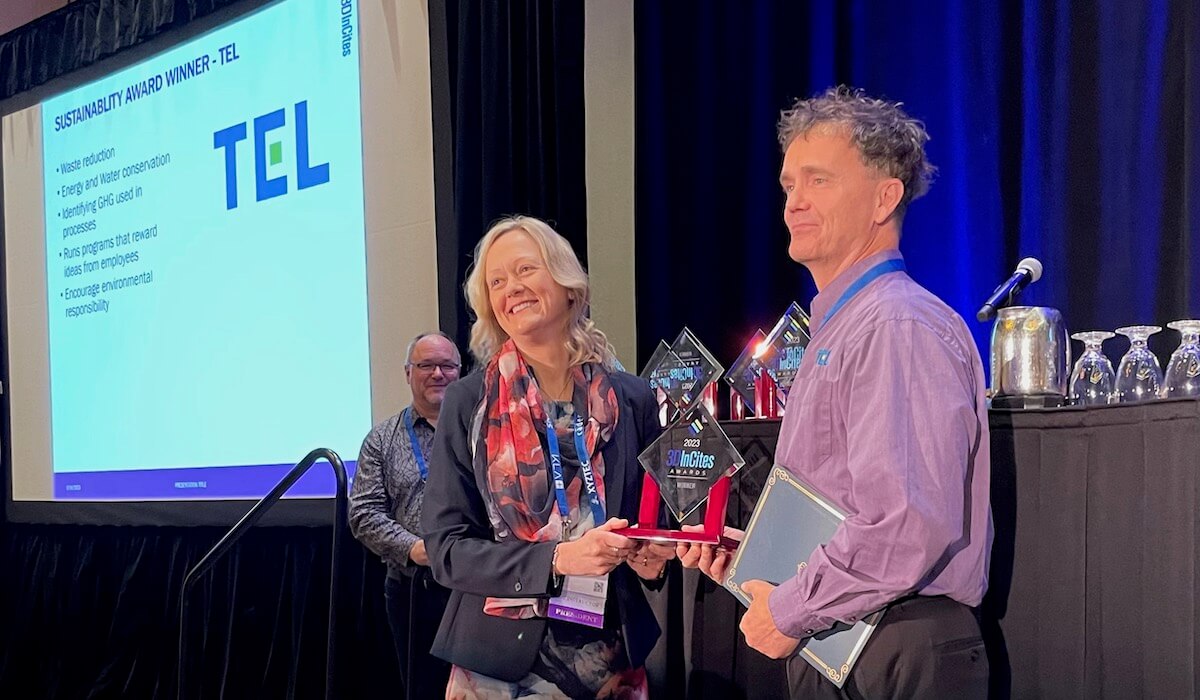2024 marks the fourth year I will serve on the 3D InCites Sustainability Award judging panel. We want to recognize companies in our industry that are sustainability leaders. (In this blog post, when I say “sustainability leader” I’m referring to a company, not an individual within it.) The more often we can highlight progress in the right direction, the better we can encourage companies throughout the supply chain to join in.
The Sustainability 101 blog post series began in 2021 with a series of posts covering critical aspects of sustainability:
- Greenhouse gas (GHG) emissions – Definitions and scopes
- Sustainability reporting –Standards and trends
- Circular economy – Understand zero waste and improving e-waste
- The product lifecycle – Sustainability and the supply chain
- Chemicals of concern – Moving beyond RoHS
- Water management – Global problem, local solutions
Companies that lead in environmental sustainability will incorporate all these aspects into their corporate culture and day-to-day work. Here’s an idea of what that looks like.
GHG Emissions
There are several ways to measure and report GHG emissions. Many companies calculate emissions intensity with an eye on reducing emissions per product shipped or per million dollars in revenue. It is encouraging to see dramatic reductions in emissions intensity. At the same time, when it comes to addressing climate change, we need to reduce absolute emissions. If intensity drops by 50 percent but production triples, the net result is more emissions into the atmosphere.
Sustainability leaders will track emissions intensity and absolute emissions and aim to reduce both. There is a caveat. If a company’s absolute emissions increase because it acquires a subsidiary or merges with another company, that shouldn’t count against them so long as the total doesn’t exceed the individual contributions from each company before the merger or acquisition.
There is also the challenge that our industry is growing. Some of our products allow customers in other sectors to reduce their emissions. It can be tricky to take that into account. That is part of why Scope 3 (indirect supply chain) emissions are difficult to calculate. They are also a vital piece of the puzzle, especially for companies where Scope 3 makes up the bulk of total emissions.
Scope 2 emissions (purchased energy) are often the easiest to reduce. The energy needed for powering facilities should come from renewable power sources whenever possible. That might involve installing solar panels on company-owned buildings or securing power purchase agreements with utility providers. Sometimes, local renewables are not available. In that case, sustainability leaders may support efforts to increase the supply.
More companies are committing to the goal of becoming carbon neutral. This is laudable, but only if pledges come with action. The approach to carbon neutrality also matters. Buying carbon credits or offsets should be a lower priority than efforts to reduce GHG emissions. With the news that many carbon offsets are shams, businesses need to be more diligent about vetting any offsets that are part of their journey to net zero emissions.
Water Management
Our industry is water-intensive, with each fab requiring millions of gallons of water per day. Sustainability leaders endeavor to recirculate as much water as possible in-house. They also look for processes that require lower water input. These approaches are valid everywhere but are especially vital in hot, dry climates or other locations with water scarcity problems.
Another aspect of water management is wastewater treatment. If you discharge wastewater from your facility, how have you filtered it to ensure it is free from hazardous chemicals? We cannot pollute nearby communities that need clean water to drink and soil that is safe for agriculture.
The Circular Economy
There are many misconceptions about what the circular economy is and isn’t. The following two paragraphs, excerpted from my upcoming book, Materials & Sustainability: Building a Circular Future, offer some clarity.
In the linear economy, we extract resources from the Earth, use them to create products or energy and discard them into the atmosphere or a landfill when they have served their purpose. In a completely circular economy, those resources would stay in circulation indefinitely. The ideal concept is a circular loop that continues without end.
In practice, progress toward circularity occurs by implementing various circularity strategies, also known as R-strategies. The R-strategies, ordered by their preferability regarding environmental impacts and resource conservation, are refuse, rethink, reduce, reuse, repair, refurbish, remanufacture, repurpose, recycle, and recover energy.
Sustainability leaders understand circularity and implement the strategies in order. They aim for, and often achieve, zero waste to landfill.
Is Your Company a Sustainability Leader?
If you found yourself nodding your head when you read this blog post, you probably work for a company that is a sustainability leader or at least heading in that direction. If any of this resonates or feels like it describes your workplace, I encourage you to apply for the 2024 3D InCites Sustainability Award.
You don’t have to be at the top of your industry in all aspects of sustainability to apply. Please tell us where you excel, what you have achieved so far, where you see gaps, and what you have in place to further reduce your environmental impact moving forward. I look forward to reading the applications and working with my fellow panelists to determine the finalists.
Here’s to sharing success stories that will inspire remarkable progress in 2024 and beyond!




















